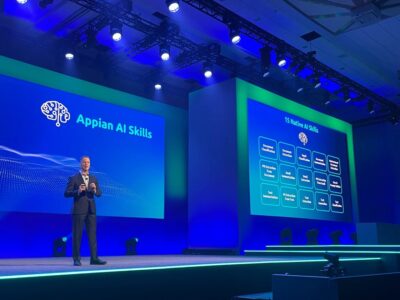As the number of infection cases as a result of the new coronavirus continue to rise each day, big changes are being made in society to enact social distancing. It is an inevitable conclusion that the pandemic will impact your business in some way.
Whether it is by changing the way that you work, halting conference travel, figuring out what to do in case work stoppages are a necessity, or simply how to keep your staff, vendors and customer safe, you’ll need to make sure that your company is in a position to answer any questions that may come.
If we can be honest for a second: It’s OK to know that there are things that you don’t know. It’s even OK if you feel scared, nervous, uneasy or unsure about the future of the organization. What’s not OK, however, is to pretend that we are not in uncertain times that require solid answers to the questions that are on all of your worker’s minds.
Here are just a few key highlights from a recent course that we taught about the impact that coronavirus will have on businesses and people leaders across the country:
Managing sick leave and PTO may become a challenge.
Employees will find themselves having to make adjustments to how and when they work due to circumstances that are out of their control. For example, many school districts across the country are closing, and not all employees will have dedicated child care, at least not right away. Therefore, you will need to decide the level of leniency that your business will have when it comes to remote work, PTO and sick leave.
Even though an employee may find him or herself at home, it’s important to distinguish the reason why the employee is at home. Employees who are in work-from-home arrangements should be able to do so without being a primary caregiver for an elderly adult family member, child or a family member with a disability. Employees who are on PTO may remain on-call or on standby as needed. However, the expectation should be that the employee is truly taking a day off. Employees that are on sick leave are likely caring for themselves or a family member and should be given the freedom to do so without penalty.
The biggest challenge that you may face in business is what to do when an employee needs a day off but they do not have any stored PTO. This is when you meet on a case-by-case basis decide to allow employees to go into the negative for leave, establish a leave bank so that employees can share leave with one another as karma or simply allow a liberal leave policy without penalty so that employees can do their best to make decisions that will keep them healthy in the long run.
Reevaluate non-essential travel.
Yes, I have seen the fares online and it is very cheap to travel across the country these days. With that being said, though, I would encourage you to take a clear stand on eliminating unnecessary travel and encourage employees to refrain from non work-related travel as well. The reason for this is simple: safety. We already know that lines in airports for medical screening have sparked chaos all across the United States.
In addition, it is likely that any employee who returns from travel may be asked to self-quarantine for up to 14 days, and that could seriously disrupt productivity at work.
By the way, you should be asking yourself what you will do if a key leader in your organization is asked to self-quarantine or even, as a worst-case scenario, contracts the coronavirus. You cannot technically tell an employee not to travel, but I would strongly consider being very firm when advising against traveling when the employee does not have to.
Brace for work stoppages and have a plan.
Another unfortunate reality is that due to slower demand, some industries will experience work stoppages. You should expect to plan on how to manage any potential furloughs, layoffs or overall reduction of hours to account for any work stoppages that may come as a result of less work coming in or notification from your supply chain that there is less of a demand. If you have more than 100 employees you will need to abide by what’s called the WARN Act, which requires warning. If you have less than 100 employees, I would encourage you to develop a policy and procedures that are proactive and include lots of communication.
Keeping workplaces safe is not just about employees.
When it comes to keeping your workplace safe, it’s important to realize that it’s not just about your employees. If you are an organization that will continue to have employees report to an office, it is likely that you may also receive visitors, vendors and others who for whatever reason need to access your business. Make sure that you are taking the proper steps to sanitize commonly touched areas like doorknobs, phones, bathrooms, pens, refrigerators and of course, coffee machines.
There is a lot of information out there on best practices when it comes to sanitation and keeping workplaces clean so I will not spend a lot of time on that. However, consider this a reminder that even the small act of washing your hands for 20 seconds and reducing human contact by way of social distancing can go a long way in flattening the curve and reducing the spread of the coronavirus.
Join the conversation!
Find news, events, jobs and people who share your interests on Technical.ly's open community Slack

DC daily roundup: Esports at Maryland rec center; High schoolers' brain algorithm; Power data centers with coal?

DC daily roundup: Tyto Athene's cross-DMV deal; Spirit owner sells to Accenture; meet 2GI's new cohort

DC daily roundup: $10M to streamline govt. contracting; life sciences might dethrone software; Acadia's new $50M


